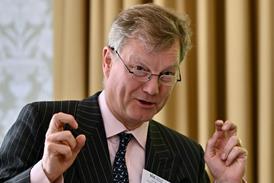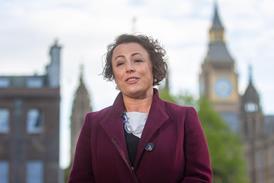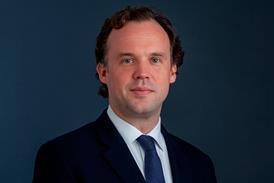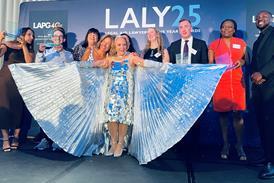As Nicholas Cusworth QC, sitting as a deputy High Court judge, stated in JB v MB [2015] EWHC 1846 (Fam), where addressing post-separation accrual, he was dealing with a ‘lawless science’ and therefore the outcome he reached ‘may be arbitrary to a degree’.
The two core issues are: how the post-separation accrual is to be categorised; and once categorised, whether it is available for distribution. Roberts J in Cooper-Hohn v Hohn [2014] EWHC 4122 (Fam) described it as balancing ‘continuum’ versus ‘new ventures’.
Post-separation accrual can be broadly placed into three categories: entirely new ventures; passive economic growth on a matrimonial asset; and active economic growth of a matrimonial asset.
Basic principles
The starting point is that up-to-date valuations are used, as opposed to values as at the date of separation. This was recently considered by Bodey J in X v X (application for a financial remedies order) [2016] EWHC 1995 (Fam) in which he considered the leading authorities. Previously, Coleridge J (pictured) had stated as follows in B v B [2013] EWHC 1232: ‘The industry standard/general rule that the date of trial is the date when both the categorisation of the pot and its value is assessed, should not easily be circumvented. The proposition that merely because an asset comes into existence after the date of separation, it should be excluded is far too simplistic and not appropriate…’
In addition, in cases where needs cannot be met without recourse to inherited assets, pre-acquired assets or post-separation accrual, arguments relating to non-matrimonial property will carry little, if any, weight. This was clearly established by Lord Nicholls in White v White. Accordingly, in the majority of cases, arguments relating to post-separation accrual may be little more than academic.
Origin of present principles
The genesis of the prevailing approach lies in the decision of Nicholas Mostyn QC sitting as a deputy High Court judge in Rossi v Rossi [2006] EWHC 1482 (Fam). The main principles of his decision are as follows:
(a) All assets must be valued as at the date of trial.
(b) Assets acquired or created by one party post-separation may be treated as non-matrimonial property, if it can be said that the asset was created or acquired by that party by virtue of their own personal industry, and not by the use of an asset which had been created during the marriage and in respect of which the other party can assert an unascertained share.
(c) Passive economic growth on matrimonial property which arises post-separation will not qualify as non-matrimonial property.
Recent case law
In Cooper-Hohn v Hohn, Roberts J considered the tension between continuum and new ventures. During the two-year period of separation, Mr Cooper-Hohn managed a portfolio which was unquestionably matrimonial property, although it had almost doubled in value during the period of separation. The increase in value was $550m. Although on the one hand Mr Cooper-Hohn was dealing with his wife’s undivided share of matrimonial assets and it was clearly not a new venture, on the other hand, in light of what he had achieved, could it simply be described as continuum? Roberts J concluded: ‘It is not my intention that the wife should receive no share of the assets which fall outside the marital acquest in this case… there is no question of her entitlement to any element of post-separation accrual being triggered by a “needs” argument, but I take the view that, notwithstanding the exponential increase in the growth of the fund post-separation, its genesis as a matrimonial asset is a factor of considerable significance. That factor must, in my view, find its reflection in the overall quantum of the financial award…’

The husband’s active economic growth during the period of separation led to Mrs Hohn receiving 36% of the assets by way of a final award. In JL v SL (No 2) [2014] EWHC 360 (Fam), Mostyn J considered Roberts J’s decision. He had concluded that although a needs-based argument would justify a claim to non-matrimonial assets, ‘only very exceptionally’ would a sharing argument justify such a claim. Mostyn J therefore questioned whether Roberts J had gone beyond a needs claim and had awarded a share of non-matrimonial assets to Mrs Hohn on the basis of a sharing argument. Mostyn J concluded, however, that the fund managed by Mr Cooper-Hohn had retained its matrimonial character, but the wife would share unequally in the increase in the value of the fund achieved by her husband in the period of separation.
Further clarifying the principles he established in Rossi v Rossi, Mostyn J summarised the principles in JL v SL (No 2) as follows:
(a) For those assets which were in place at the point of separation, they remain matrimonial property, but the increase in value achieved in the period of separation may be unequally divided. Mostyn J emphasised the word ‘may’. He continued that obviously passive growth will not be shared other than equally, and there will be cases where on the facts, even active growth will be equally shared.
(b) On the other hand, Mostyn J stated that there will be cases where the post-separation accrual relates to a truly new venture which has no connection to the marital partnership or to the assets of the partnership. In such a case, Mostyn J concluded that the post-separation accrual should be designated as non-matrimonial property and, save in a very rare case, should not be shared.
Cusworth concluded that the wife’s award needed to reflect the fact that the increase in the value of the shareholding had been due to an unmatched economic endeavour by the husband over a number of years post-separation.
More recently, the principles were considered by Cusworth in JB v MB. The husband had established a business pre-cohabitation, though the business only really flourished three to four years post-separation due to the husband having created a new product. Cusworth noted that there has been a greater degree of continuum than the husband had admitted and that he was continuing to trade with the wife’s undivided share of the assets. Furthermore, the delay in instigating the proceedings had in part been orchestrated and sanctioned by the husband in order to enable him to trade with the full value of his shareholding. Cusworth concluded that the wife’s award needed to reflect the fact that the increase in the value of the shareholding had been due to an unmatched economic endeavour by the husband over a number of years post-separation. The wife was therefore ultimately awarded 20% of the value in the shares which was to be paid upon the eventual sale of the business.
Conclusion
A new venture would therefore be categorised as non-matrimonial and therefore would not be shared, save for very rare cases. By contrast, passive growth will usually be shared equally. Passive growth is likely to arise in respect of assets such as property, pensions, savings and investments. The most complicated evidential issues arise in respect of active growth and a careful analysis will be required regarding the genesis of the asset being utilised and the role of the individual in creating active growth.






























No comments yet